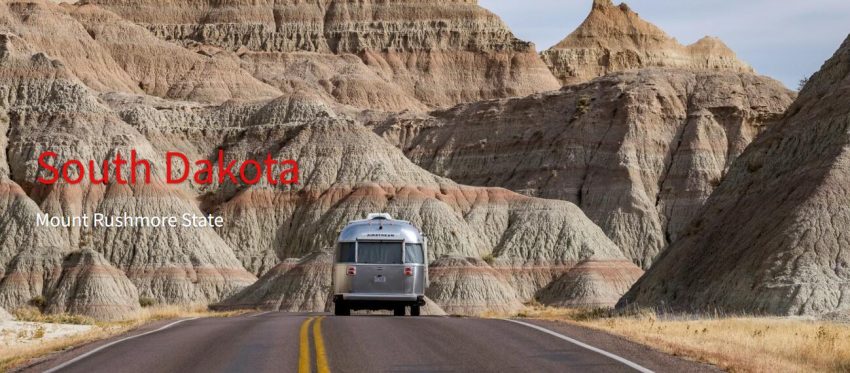Information South Dakota
South Dakota, abbreviation SD, is a state that is located, how could it be otherwise, south of North Dakota, quite centrally in the United States of America. The state capital is Pierre and the largest city is Sioux Falls. The state’s nickname is “the Mount Rushmore State. As evidenced by the State’s nickname, South Dakota’s main tourist attraction is Mount Rushmore. Mount Rushmore is a national monument located in the Black Hills. In the granite of the mountains are the heads of the four founders of the United States, George Washinton, Thomas Jefferson, Theodore Roosevelt and Abraham Lincoln
Geography
South Dakota is located in the northern United States, on the Great Plains. The state borders North Dakota, Minnesota, Iowa, Nebraska, Wyoming, and Montana. The state measures a maximum of 610 kilometers from west to east and 380 kilometers from north to south. So South Dakota is a large state and sparsely populated. The Missouri River first forms the southern border and then flows through the center of the state and is dammed with several large reservoirs, including the large Lake Oahe. The Missouri River is the cultural divide in South Dakota, with mostly ranches and Native American reservations west of the river and more developed countryside east of the river.
South Dakota is mostly a flat state except for the southwest part of the state. This is where the Black Hills are located, of which the 2,208 meter high Harney Peak is the highest point in the state. Two national parks are also located near the Black Hills, Wind Cave National Park and Badlands National Park. The Badlands is an eroded landscape with small but abrupt elevation changes. There are no other major rivers besides the Missouri River.
History
After their victory at the Battle of Little Bighorn in 1876, the Sioux perished in the 1890 massacre at Wounded Knee. More than 150 Indians were brutally killed in a conflict that got out of hand.
Under certain Sioux, the theory had arisen that all whites should be exterminated and that this could be achieved through combat, with the Native Americans having an advantage because they wore special enchanted shirts that would reflect the bullets fired at them. The Americans saw this as a danger and kept a close eye on the Sioux. When they encountered a group of Indians, they asked one of them to hand over his rifle, but he did not respond to that request. Later it turned out that this was because he was deaf and simply couldn’t hear it. However, this misunderstanding resulted in a horrific shooting, eventually ending the era of armed conflict between Native Americans and the US military.
Economy
South Dakota’s economy is based on agriculture and manufacturing. Large parts of South Dakota are suitable for agriculture, although the west is drier and mainly suitable for ranching. The cities of Sioux Falls and Rapid City are responsible for a significant portion of the state’s GDP. However, the Native American reservations in the west are underdeveloped and are among the poorest areas in the United States. One of the largest employers in the state is defense, especially due to the presence of Ellsworth Air Force Base near Rapid City.
| Abbreviation: | SD |
| Nickname: | Mount Rushmore State |
| Joined the US as the 39th state on: | 2 november 1889 |
| Capital city: | Pierre |
| Census: | 858.469 |
| Surface: | 199.905 km² |
| Geography: | Neighbors include North Dakota, Minnesota, Iowa, Nebraska, Wyoming and Montana |
| Governor: | Kristi Noem |
| state motto: | Under God the people rule |
| California official website: | sd.gov |

